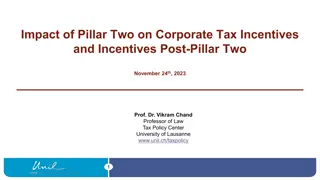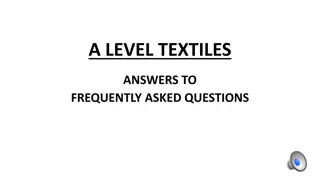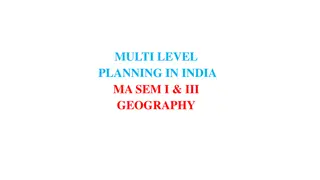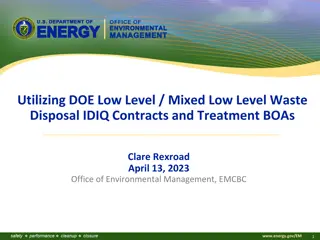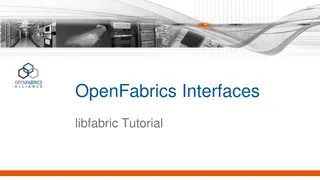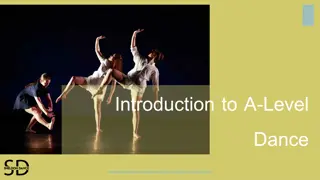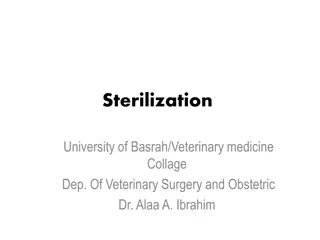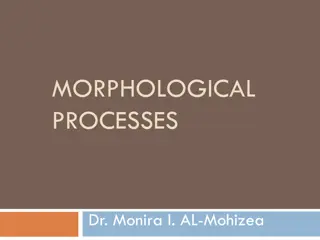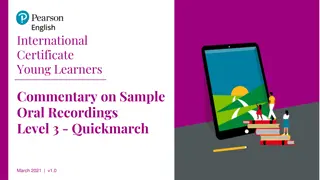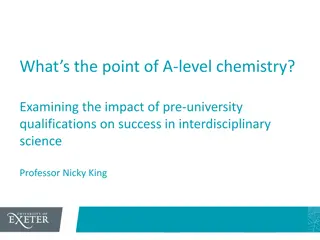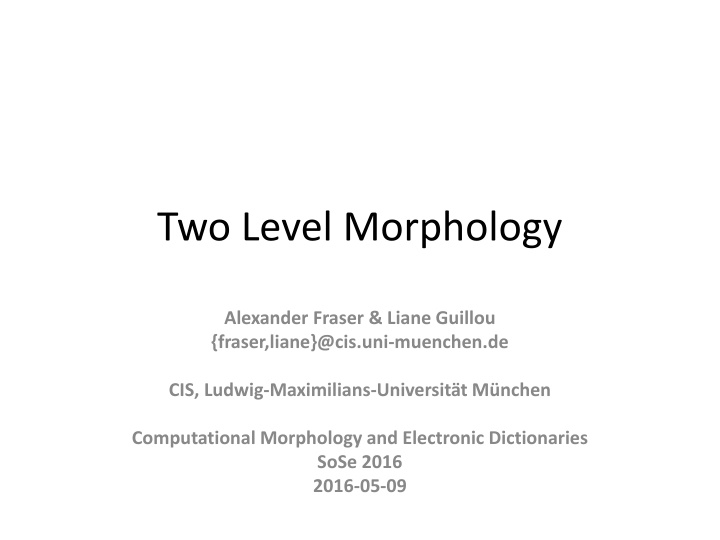
Two-Level Morphology in Computational Linguistics
Explore the concept of two-level morphology in computational linguistics, where two transducers are used to handle complex morphology tasks efficiently. Learn about finite-state morphological parsing and how it simplifies the processing of linguistic structures. Credits to Ching-Long Yeh, Tatung University, for the adapted lecture material.
Download Presentation

Please find below an Image/Link to download the presentation.
The content on the website is provided AS IS for your information and personal use only. It may not be sold, licensed, or shared on other websites without obtaining consent from the author. If you encounter any issues during the download, it is possible that the publisher has removed the file from their server.
You are allowed to download the files provided on this website for personal or commercial use, subject to the condition that they are used lawfully. All files are the property of their respective owners.
The content on the website is provided AS IS for your information and personal use only. It may not be sold, licensed, or shared on other websites without obtaining consent from the author.
E N D
Presentation Transcript
Two Level Morphology Alexander Fraser & Liane Guillou {fraser,liane}@cis.uni-muenchen.de CIS, Ludwig-Maximilians-Universit t M nchen Computational Morphology and Electronic Dictionaries SoSe 2016 2016-05-09
Outline Today we will briefly discuss two-level morphology Then Luisa will present an exercise showing how to use these concepts
Credits Adapted from a lecture by Ching-Long Yeh, Tatung University Which was adapted from: Chapter 3 Morphology and Finite-State Transducers Speech and Language Processing An Introduction to Natural Language Processing, Computational Linguistics, and Speech Recognition Daniel Jurafsky and James H. Martin
Two-Level Morphology Two-level morphology is a key idea for dealing with morphology in a finite state framework The critical generalization is that it is difficult to deal with things like orthographic rules in English with a single transducer The key to making this work will be to use two transducers Recall that we can compose transducers Composing intuitively means we feed the output of the first transducer as the input to the second transducer
3.2 Finite-State Morphological Parsing Morphological Parsing with FST Composition is useful because it allows us to take two transducers than run in series and replace them with one complex transducer. T1 T2(S) = T2(T1(S) ) Reg-noun Irreg-pl-noun Irreg-sg-noun fox cat fog aardvark g o:e o:e s e sheep m o:i u: s:c e goose sheep mouse A transducer for English nominal number inflection Tnum
3.2 Finite-State Morphological Parsing Morphological Parsing with FST The transducer Tstems, which maps roots to their root-class Morphology and FSTs 7
3.2 Finite-State Morphological Parsing Morphological Parsing with FST The transducer Tstems, which maps roots to their root-class Morphology and FSTs 8
3.2 Finite-State Morphological Parsing Morphological Parsing with FST ^: morpheme boundary #: word boundary A fleshed-out English nominal inflection FST Tlex= Tnum Tstems Morphology and FSTs 9
3.2 Finite-State Morphological Parsing Orthographic Rules and FSTs Spelling rules (or orthographic rules) Name Description of Rule Example Consonant doubling E deletion E insertion Y replacement K insertion 1-letter consonant doubled before -ing/-ed Silent e dropped before -ing and -ed e added after -s, -z, -x, -ch, -sh, before -s -y changes to -ie before -s, -i before -ed Verb ending with vowel + -c add -k beg/begging make/making watch/watches try/tries panic/panicked These spelling changes can be thought as taking as input a simple concatenation of morphemes and producing as output a slightly-modified concatenation of morphemes. Morphology and FSTs 10
3.2 Finite-State Morphological Parsing Orthographic Rules and FSTs insert an e on the surface tape just when the lexical tape has a morpheme ending in x (or z, etc) and the next morphemes is s x e/ s ^ s# z rewrite a as b when it occurs between c and d a b / c d This syntax is from the seminar paper of Chomsky and Halle (1968) Note that ^ is used as a morpheme boundary, and # means that we talking about a word-final "-s" Morphology and FSTs 11
3.2 Finite-State Morphological Parsing Orthographic Rules and FSTs The transducer for the E-insertion rule Morphology and FSTs 12
3.3 Combining FST Lexicon and Rules Morphology and FSTs 13
3.3 Combining FST Lexicon and Rules Morphology and FSTs 14
3.3 Combining FST Lexicon and Rules The power of FSTs is that the exact same cascade with the same state sequences is used when machine is generating the surface form from the lexical tape, or When it is parsing the lexical tape from the surface tape. Parsing can be slightly more complicated than generation, because of the problem of ambiguity. For example, foxes could be fox +V +3SG as well as fox +N +PL Morphology and FSTs 15
Summary Two-level morphology depends on using two composed transducers to capture complex morphological phenomena The example we looked at involved the orthography of realizing the plural morpheme "-s" in English Two-level morphology is the technology behind most morphological analysis systems

